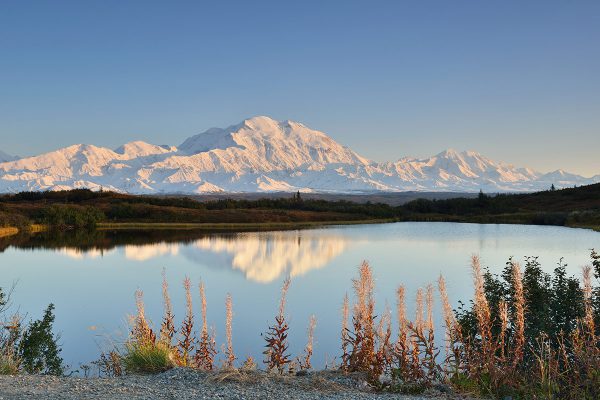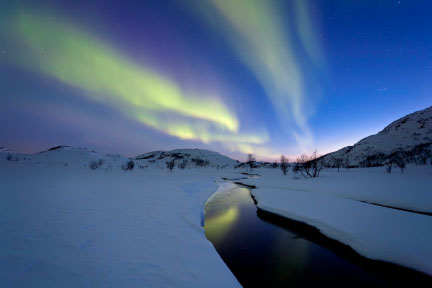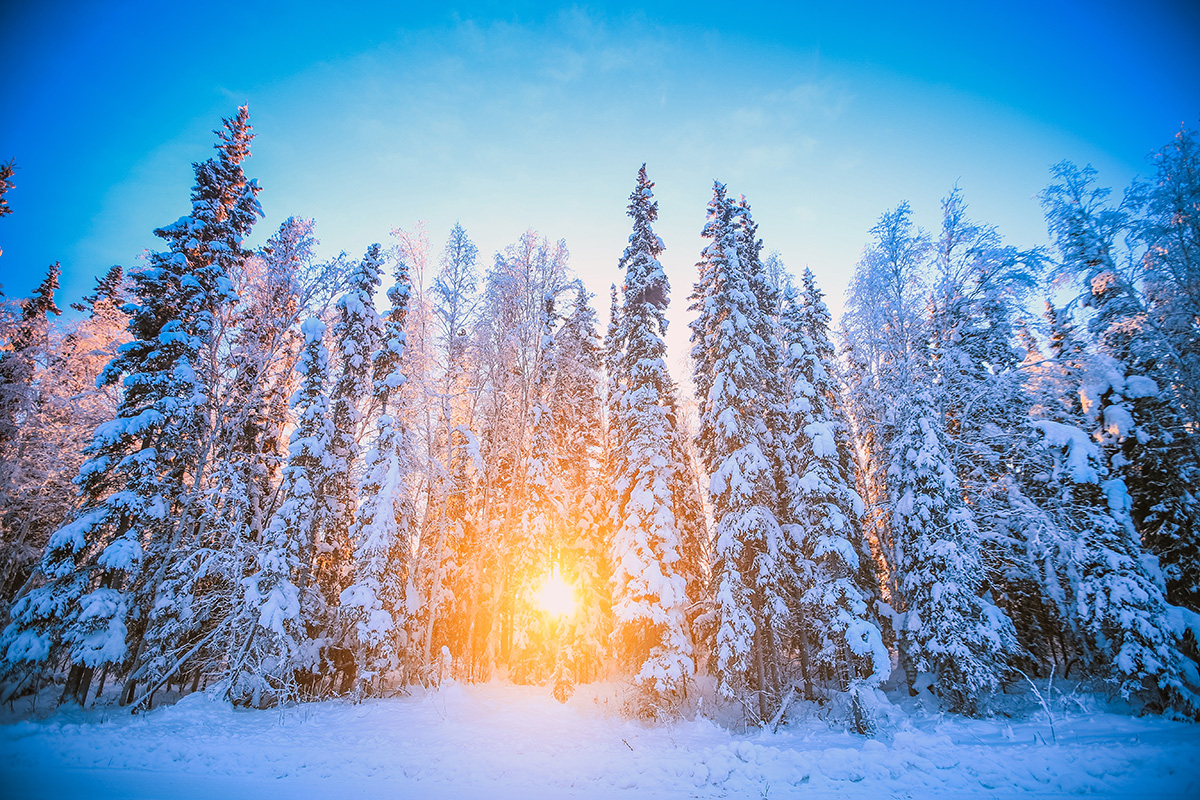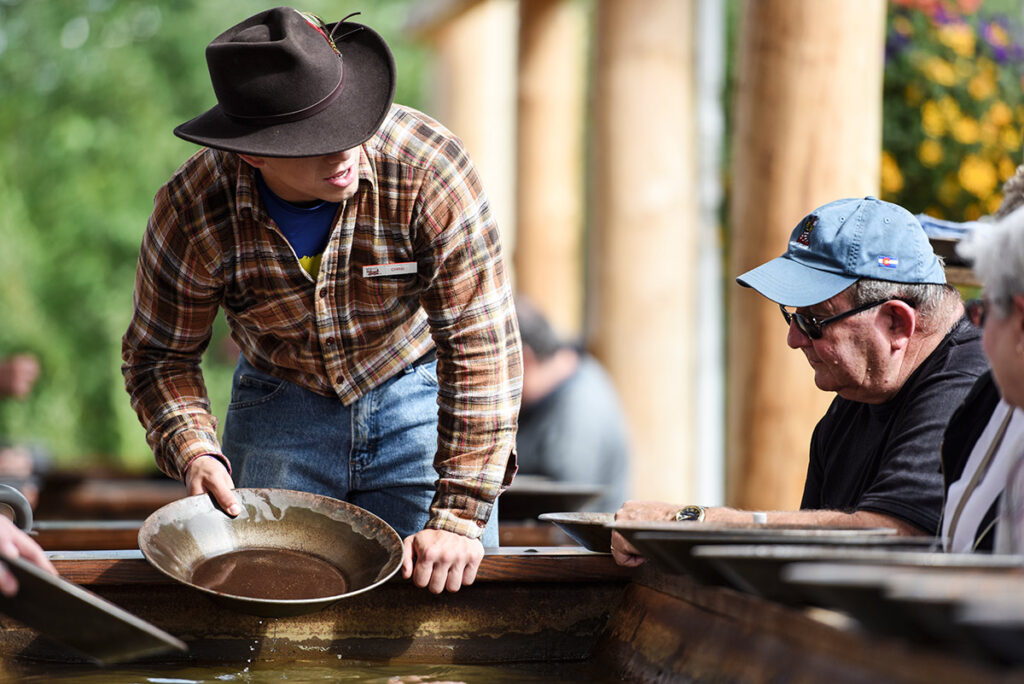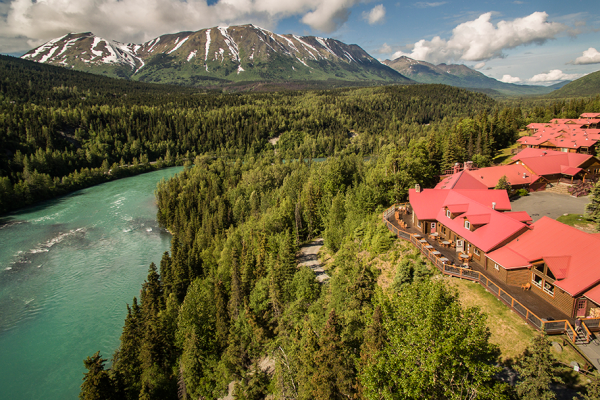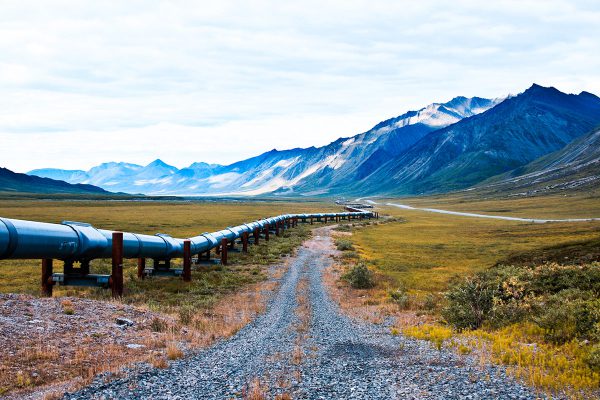49 Fun Facts About Alaska
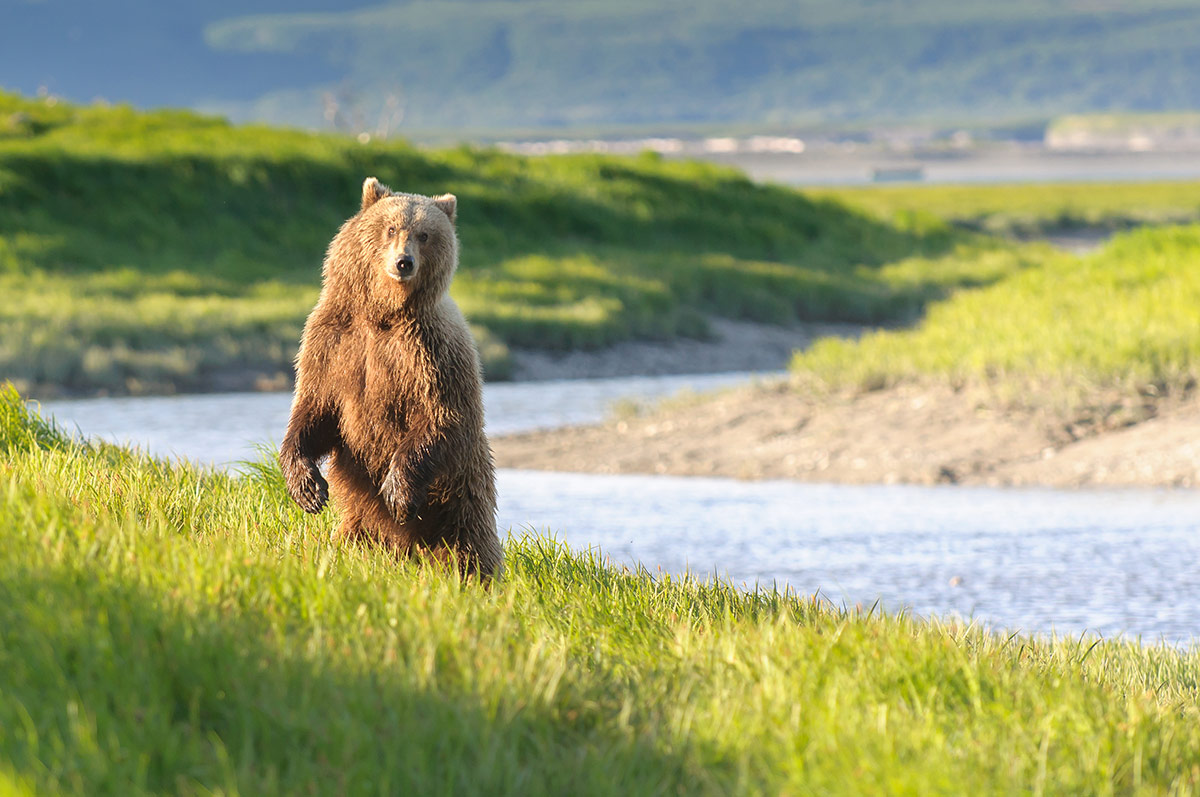
What is Alaska known for? Get to know the 49th state with these fun facts about Alaska that you can share with your friends, use to enhance your school report, or just to give you a leg up on trivia night.
Top Alaska facts
1. Alaska is home to 17 of North America’s tallest mountains.
Of the 20 highest peaks in the U.S., 17 are in Alaska, including the highest peak in North America (20,320 feet above sea level), Denali. According to a National Park Service article, nine Alaska Native groups and five Athabaskan languages have had unique names for Denali that all translate to some form of “The Great One” or “The Tall One.”
2. Alaska has more than 100 volcanoes and volcanic fields.
Alaska contains more than volcanoes and volcanic fields than any other state in the U.S. Don’t worry, according to the U.S. Geological Survey, Alaska volcanoes have produced one or two eruptions since 1900.
3. There are more than 3,000 rivers and 3 million lakes in Alaska.
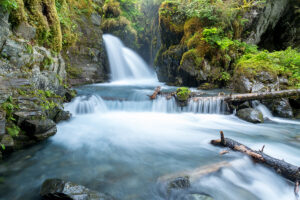
Whether you like to kayak on peaceful waters or hit the rapids in a raft, Alaska has it all.
4. Alaska’s largest lake is Lake Iliamna.
At 77 miles long, that’s about as wide as Connecticut. Depending on who you believe, it’s also home to a legendary monster (or maybe just a sleeper shark).
5. Alaska has more coastline than the rest of the U.S. combined (more than 34,000 miles).
That’s all the beach with none of the crowds! The state with the 2nd most coastline is Florida with 8,436 miles of coastline (just 25% of what Alaska has to offer).
6. Alaska is 14.2% water.
According to USGS, Alaska has 94,743 square miles of water area in the state. How wet is your state?
7. Alaska has coastlines on three different seas.
They are the Arctic Ocean, Pacific Ocean, and Bering Sea. Pick your Alaska vacation based on which body of water you want to visit!
8. Most U.S. glaciers are in Alaska.
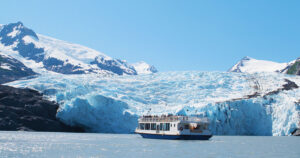
Based on the most recent comprehensive survey in 2011, there were about 27,000 glaciers in Alaska.
9. About 3% of Alaska is covered by glaciers.
If you want to see beautiful blue ice that’s thousands of years old, a trip to Alaska might be the way to go.
10. Alaska is seismically active.
The Alaska Earthquake Center has reported more than 150,000 earthquakes in the last five years, 31 of those had magnitudes of 6 or higher. Of the eight strongest earthquakes ever recorded in the world, three have occurred in Alaska. While these earthquake statistics seem scary, many of these quakes are in unpopulated areas or are so small they are barely felt.
11. Alaska has no poison ivy or poison oak.
Hikers should watch out for plants like cow parsnip and devils club which can cause reactions for some people.
12. The nation’s two largest forests are located in Alaska.
The Tongass in Southeast includes 16.8 million acres and Chugach in Southcentral has 4.8 million acres.
Lesser-known Alaska facts
13. Alaska means “The Great Land”.
The name comes from the Aleut word Alyeska.
14. Alaska’s flag was designed by a 13-year-old.
Benny Benson designed the flag in 1926. It would become the official state flag upon Alaska’s adoption into the Union in 1959.
15. The state bird of Alaska is the willow ptarmigan.
Some like to joke the state bird is really the mosquito.
16. The state sport of Alaska is dog mushing.
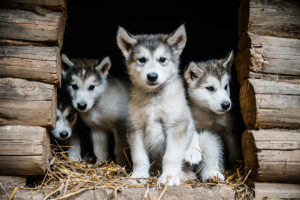
This was once the primary mode of transportation in most of Alaska. The Iditarod Trail Sled Dog Race is the state’s largest sporting event.
17. Alaska’s population density is one person per square mile.
That means plenty of area to get out and explore without large crowds.
18. Alaska has the lowest population density in the nation.
If Manhattan, New York, had the same population density as Alaska, only 16 people would be living on the island.
19. The majority of Alaskans are men.
About 52% of Alaskans are men – the highest percentage of any state.
20. Alaska Natives make up 18% of the state’s population.
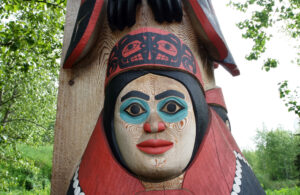
There are 224 federally recognized Alaska Native tribes and 20 indigenous languages spoken in the state.
21. The northernmost, easternmost and westernmost points in the U.S. are found in Alaska.
It’s true! Point Barrow in the north and both the eastern and western points are in the Aleutian Chain. Pochnoi Point on Semisopochnoi Island in the Aleutians is considered the easternmost point and Amatignak Island is the westernmost point because it lies east of the 180-degree longitude.
22. Alaska is approximately 50 miles from Russia.
If you could drive across the ocean you could be there in under an hour!
23. Barrow is the northernmost city.
Barrow has both the longest and shortest amount of daylight in the state. When the sun rises on May 10, it doesn’t set for nearly three months. When it sets on November 18, Barrow residents do not see the sun again for nearly two months. A summer trip to Barrow will help you understand why Alaska is known as the Land of the Midnight Sun.
24. Almost one-third of Alaska’s land is in the Arctic Circle.
From Fairbanks, it’s easy to make the trip along Dalton Highway 101 to the Arctic Circle. Now that’s a bucket list item we would all love to check off!
25. The northern lights can be seen in Alaska.
The aurora borealis (northern lights) can be seen an average of 243 days a year in Fairbanks. The northern lights are produced by charged electrons and protons striking the earth’s upper atmosphere.
Facts about Alaska weather
26. Fairbanks experiences low temperatures.
The average high temperature for Fairbanks in the month of January is 1 degree, the average low is 17 degrees below zero. Don’t be afraid of the cold, with plenty of layers you’ll be fine for a few hours hunting the northern lights.
27. Alaska has pleasant summers.
The highest temperature recorded in Alaska was 100 degrees in Fort Yukon in 1915. If the cold January temperatures in Fairbanks aren’t for you, plan your interior Alaska vacation during the summertime to enjoy warmer temperatures.
28. Alaska has the lowest temperature recorded in the U.S.
The lowest temperature recorded in Alaska was -80 degrees at Prospect Creek Camp in 1971.
Facts about Alaska’s history and interesting quirks
29. Alaska has Gold Rush history.
Some say that during the Klondike Gold Rush in 1897, potatoes were so highly valued for their vitamin C content that miners traded gold for them. Don’t worry, we’ve got plenty of access to vitamin C-rich foods now so if you try your hand at panning for gold you won’t have to trade it away for potatoes.
30. Alaska has World War II history.
The only battle during World War II that was fought on American soil took place in 1943 after the Japanese invaded the Aleutian Islands. The Battel of Attu lasted from May 11 to May 30.
31. Alaska was reached by outsiders in 1741.
Danish explorer Vitus Jonassen Bering sighted it on a voyage from Siberia. Russians hunters began traveling to the state and the first official Russian colony was founded on Kodiak Island in 1784.
32. Russia sold Alaska to the U.S. for $7.2 million.
The deal was initially ridiculed and called “Seward’s Folly” and other names in the press. When gold was found in 1898, people flocked to the region and now Alaska celebrates Seward’s Day each March 30 to commemorate the sale.
33. Alaskans celebrate Alaska Day each October 18.
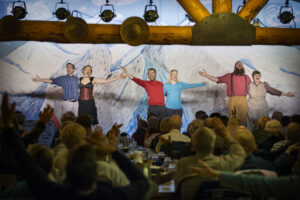
This holiday commemorates the official transfer of the territory.
34. Anchorage is home to a unique spot.
On Upper Huffman Road in Anchorage on Gravity Hill, the laws of physics don’t apply (if only by illusion). A car in neutral at the bottom of the hill mysteriously rolls up instead of down!
35. Claims have been made about paranormal activity.
The Wendy Williamson Auditorium on the University of Alaska Anchorage campus is said to be haunted and there are many tales of strange events in the theater.
36. You can type “Alaska” on one row of a keyboard.
Go ahead and try it, we know you want to!
37. Giant vegetables are common in Alaska.
At the Alaska State Fair, farmers show off their large veggies and compete for world records. Scott Robb still holds the world record for his 138.25-pound cabbage presented in 2012. Scott and Mardie Robb also hold the record for the world’s largest turnip coming in at 39 pounds 3 ounces. That’s a lot of coleslaw!
Facts about Alaska’s wildlife and fishing
38. The largest salmon ever caught was at the Kenai River.
It weighed in at 97 pounds and four ounces.
39. The Pribilof Islands have the largest aggregation of northern fur seals.
About half of the world’s northern fur seals head to the islands to breed or haul-out.
40. Kodiak bears can weigh 1,500 pounds.
They can be 10 feet tall standing on their hind legs.
41. Moose can grow to 1,600 pounds.
Their antlers may span up to 6 feet wide.
Facts about Alaska’s industry and economy
42. Alaska does not have a state sales tax.
Alaska is the only state that does not collect state sales tax or levy an individual income tax (some cities have sales tax, however).
43. Seafood is big business.
According to the Alaska Seafood Marketing Institute, seafood is the economic foundation of many rural communities where more than 21,200 residents or 15% of all rural working-aged were directly employed by the industry.
44. Alaska has the most commercial fisheries in the U.S.
Five species of salmon, four species of crab, cod, shrimp, halibut and more are harvested in Alaska.
45. Prudhoe Bay is North America’s largest oil field.
It is located on the state’s northern coast.
46. The Trans-Alaska Pipeline stretches more than 800 miles.
It passes over rugged terrain (including three mountain ranges) from Prudhoe Bay to Valdez. More than 18 billion barrels have moved through the pipeline. The pipeline project involved 77,000 workers from 1969 through its completion in 1977.
47. Alaska has more than 10,000 active pilots.
With more than 1% of the state’s population with some level of certification, its 3.6 times higher than the U.S. average. The state also has four times the number of airports per square mile. This can be attributed to the fact that so many places in Alaska are only accessible by air or water.
48. Seaplanes are popular in Alaska.
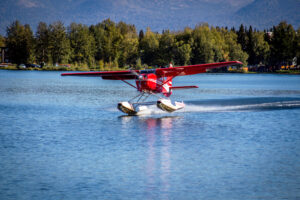
Lake Hood in Anchorage is the world’s largest and busiest seaplane base.
49. Zinc is Alaska’s biggest mineral export.
However, gold might be what Alaska is most known for.
Now that you’re ready to impress your friends with these facts about Alaska, why not get to know the state even better? Check out Gray Line Alaska’s rail tours and vacation packages to experience Alaska for yourself.
Back to Blog
